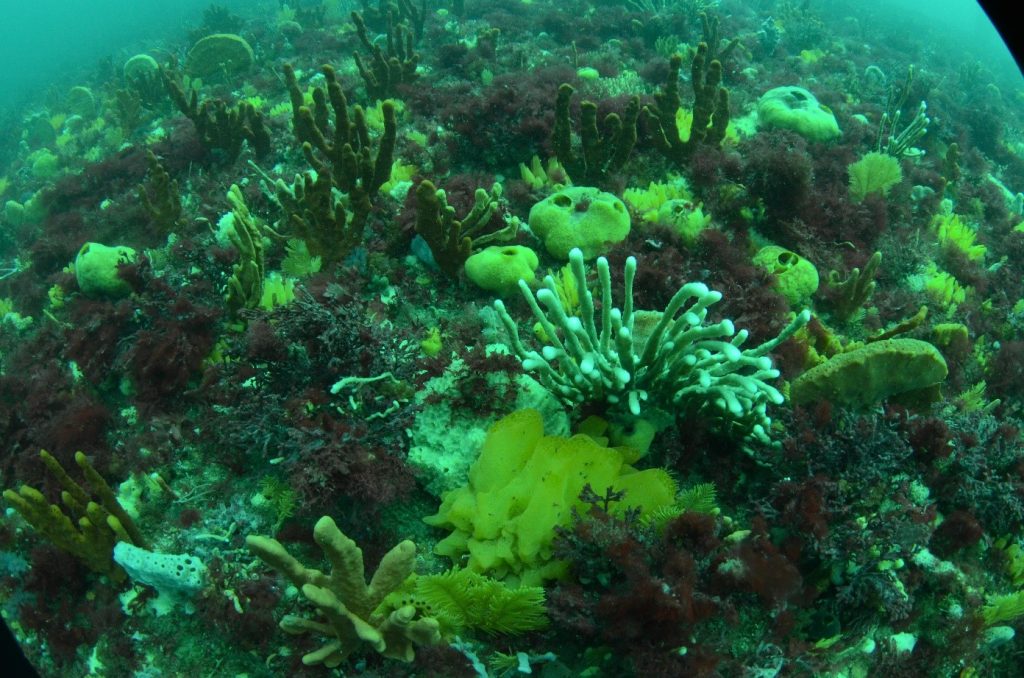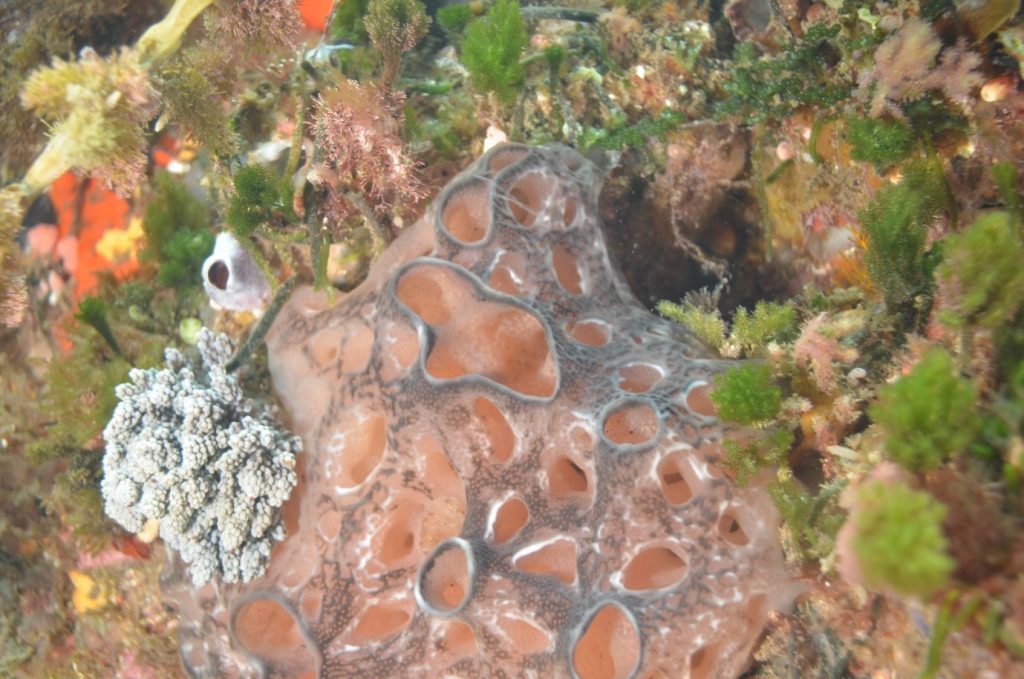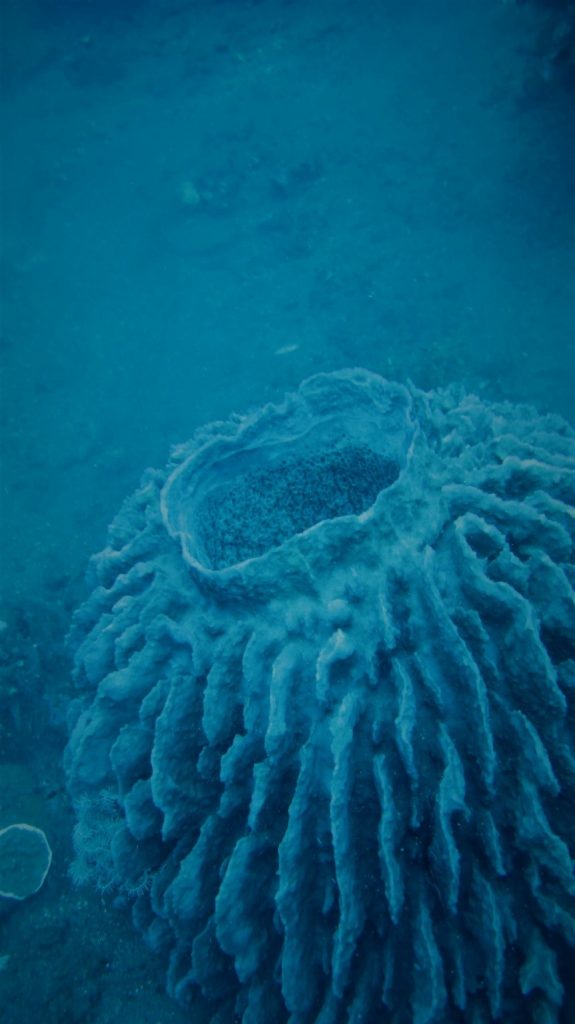
If you want to talk about marine animals we may as well start with the old and simple ones. Sponges are very simple creatures with no tissues. Sponges have been around approximately 600 million years, back to the earliest period of Earth’s history.
While most sponges are found in the ocean, numerous species are also found in fresh water and estuaries. They live on hard, rocky surfaces or soft sediments. Some sponges even attach themselves to floating debris. Although sponges are sessile (meaning they don’t move, they can manoeuvre a small amount to get themselves in a better position).
Many sponges have cell and canal structures which enable them to grow into innumerable shapes including irregular, massive blobs, flatter, encrusting forms, perfect spheres, enormous vases, elongated tubes and elegant funnels. This ability to grow into different shapes also helps sponges adapt to different types of environments, partly explaining their presence in every marine environment.
How to separate them
Each species has a ‘skeleton’ of uniquely shaped glass-fibre like spicules which are used to identify them. The approximately 8,550 living sponge species are scientifically classified in the phylum Porifera. Less than 200 sponge species live in fresh water. About 160 species are found just in the Sydney region. A new type of sponge is found every year.
Porifera is comprised of four classes:
Demospongiae(containing 90 percent of all living sponges)

–
Hexactinellida (the rare glass sponges),
Calcarea (calcareous sponges)

Homoscleromorpha (the rarest and simplest, with approximately 117 species).
Water filters through thousands of pores on a sponge’s porous exterior. They use specialised cells that have paddle-like cilia, giving it food and oxygen, and dispelling waste. Inside the sponge, tiny hairlike structures called flagella create currents to filter bacteria out of the sponge’s cells and trap food within them. The beating of these cilia can pump the equivalent of four to five times the sponge’s volume of water every minute. A basketball-sized sponge could filter an entire residential pool in one day. There are enough of them in the Caribbean Sea, to filter all of the water in one day. Sponges can affect water quality by filtering water, collecting bacteria, and processing carbon, nitrogen, and phosphorus.

Sponges primarily eat bacteria, phytoplankton and other bits out of the water column. A number of sponge species are known to have a more carnivorous diet, eating small fish and crustaceans on the reefs. It has evolved in very food-poor environments, so has modified its internal skeleton in order to ‘hook’ (a bit like Velcro strips) passing swimming animals, often tiny crustaceans, that land upon the sponge, which they ingest over several days. Polar sponges must be able to cope with going from a food-poor winter with 24 hours of darkness, to a food-rich summer with 24 hours of daylight. Sponges living in the deep sea, where food is generally scarce, might also have to cope with long intervals without food.
Sponges are fixed to the bottom they cannot avoid predators. Most carnivorous animals avoid sponges as they are of poor nutritional value and are protected by spicules and sometimes toxins. The spicules protect the sponge from predators because a mouthful of sponge would be like a mouthful of splinters. Sea turtles, crustaceans, fish and eat sponges.
Sponges are hermaphrodites, which means that they have both male and female reproductive organs. Fertilisation occurs inside many sponges, and sometimes externally when sperm are released into the water. The tiny sponge larvae are able to move through the water and eventually settle on the sea floor as they get bigger, and begin to move very little.
Yellow tube sponges reproduce both sexually and asexually, with asexual reproduction typically occurring only when storms or other disturbances break off part of the body.
Sponges provide shelter crabs, shrimps, fishes (including gobies and cardinalfishes). Sponges can contain 16,000 other animals inside of it.
The body of the sponge is made up of a jelly-like substance that is supported by a thin layer of cells on either side. Sponge cells do not have specialized purposes. The Sea Sponge doesn’t have a brain nor central nervous system. Each of a sponge’s individual cells can transform to complete the job of any other cell in the body. Most sponges have a glass-like skeletal structure made of silicates. A strong skeletal structure help sponges withstand the high volume of water that flows through them each day.
If pieces of an individual are broken off by predators or during a storm, they can reattach and begin growing a new sponge. In a laboratory, a sponge that is destroyed in a blender can reform itself as the cells swim back together and take form.
Some deep sea sponges can live up to the age of 200 years. Some calcified demosponges have even been reported to live for thousand years and more.

Sponges are the ocean’s natural DNA collectors
Sponges in Antarctica and the Mediterranean record the species of animals that live around them.
To protect the oceans, scientists, conservationists and policy makers need to know what is living there.
The last decade or so has seen a growing interest in what is called environmental DNA, or eDNA for short.
As animals move through soil or water, they invariably shed cells and bits of tissue that contain their DNA. The theory goes that by sampling ocean water, filtering out these cells and then analysing the DNA held within, researchers can build a picture of which animals are living in an environment at any one time.
This can often be an expensive technique, but researchers have discovered that sponges can filter water and concentrate the DNA.
There are around 10,000 species of sponges that can be found throughout the world’s oceans. Most species live on the seafloor. Sponges are the first group of animals that branched off the evolutionary tree, with the earliest fossil sponges dating to 580 million years ago.
Dr Ana Riesgo Gil identified up to 31 different species of vertebrates based on the eDNA trapped within samples of sponges.
This required designing short pieces of DNA, known as primers, that only stick to vertebrate DNA. Those isolated sections of DNA could then be duplicated and analysed, allowing the researchers to identify the species present.
‘For now all we can tell is just the presence or absence of species, but we want to test if it can also give any indication of abundance.’
‘Sponges are everywhere, even in freshwater ecosystems,’ explains Ana. ‘They can live from intertidal waters to depths of 4,000 metres. That opens the possibility to sample deep-sea communities and see what organisms live down there.’
